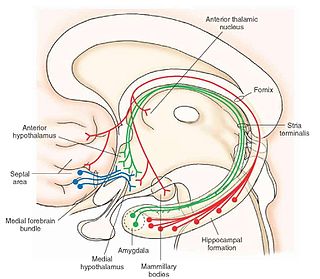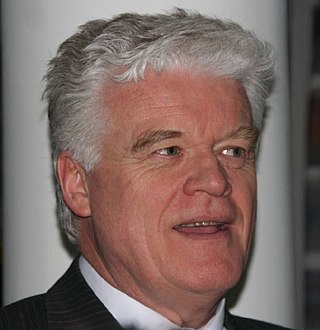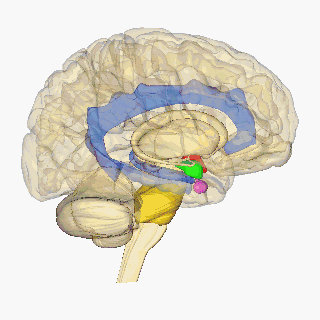Anhedonia is a diverse array of deficits in hedonic function, including reduced motivation or ability to experience pleasure. While earlier definitions emphasized the inability to experience pleasure, anhedonia is currently used by researchers to refer to reduced motivation, reduced anticipatory pleasure (wanting), reduced consummatory pleasure (liking), and deficits in reinforcement learning. In the Diagnostic and Statistical Manual of Mental Disorders, Fifth Edition (DSM-5), anhedonia is a component of depressive disorders, substance-related disorders, psychotic disorders, and personality disorders, where it is defined by either a reduced ability to experience pleasure, or a diminished interest in engaging in pleasurable activities. While the International Statistical Classification of Diseases and Related Health Problems, Tenth Revision (ICD-10) does not explicitly mention anhedonia, the depressive symptom analogous to anhedonia as described in the DSM-5 is a loss of interest or pleasure.

The septal area, consisting of the lateral septum and medial septum, is an area in the lower, posterior part of the medial surface of the frontal lobe, and refers to the nearby septum pellucidum.

The medial forebrain bundle (MFB), is a neural pathway containing fibers from the basal olfactory regions, the periamygdaloid region and the septal nuclei, as well as fibers from brainstem regions, including the ventral tegmental area and nigrostriatal pathway.
The International Behavioural and Neural Genetics Society (IBANGS) is a learned society that was founded in 1996. The goal of IBANGS is "promote and facilitate the growth of research in the field of neural behavioral genetics".

C. Sue Carter is an American biologist and behavioral neurobiologist. She is an internationally recognized expert in behavioral neuroendocrinology. In 2014 she was appointed Director of The Kinsey Institute and Rudy Professor of Biology at Indiana University. Carter was the first person to identify the physiological mechanisms responsible for social monogamy.

Sexual orientation is an enduring pattern of romantic or sexual attraction to persons of the opposite sex or gender, the same sex or gender, or to both sexes or more than one gender, or none of the aforementioned at all. The ultimate causes and mechanisms of sexual orientation development in humans remain unclear and many theories are speculative and controversial. However, advances in neuroscience explain and illustrate characteristics linked to sexual orientation. Studies have explored structural neural-correlates, functional and/or cognitive relationships, and developmental theories relating to sexual orientation in humans.
The ventral pallidum (VP) is a structure within the basal ganglia of the brain. It is an output nucleus whose fibres project to thalamic nuclei, such as the ventral anterior nucleus, the ventral lateral nucleus, and the medial dorsal nucleus. The VP is a core component of the reward system which forms part of the limbic loop of the basal ganglia, a pathway involved in the regulation of motivational salience, behavior, and emotions. It is involved in addiction.

Wim E. Crusio is a Dutch behavioral neurogeneticist and a directeur de recherche with the French National Centre for Scientific Research in Talence, France.

Jacqueline N. Crawley is an American behavioral neuroscientist and an expert on rodent behavioral analysis. Since July 2012, she is the Robert E. Chason Chair in Translational Research in the MIND Institute and professor of psychiatry and behavioral sciences at the University of California, Davis School of Medicine in Sacramento. Previously, from 1983–2012, she was chief of the Laboratory of Behavioral Neuroscience in the intramural program of the National Institute of Mental Health. Her translational research program focuses on testing hypotheses about the genetic causes of autism spectrum disorders and discovering treatments for the diagnostic symptoms of autism, using mouse models. She has published more than 275 peer-reviewed articles in scientific journals and 110 review articles and book chapters. According to Scopus, her works have been cited over 36,000 times, giving her an h-index of 99. She has co-edited 4 books and is the author of What's Wrong With my Mouse? Behavioral Phenotyping of Transgenic and Knockout Mice, which was very well received.
Animal models of depression are research tools used to investigate depression and action of antidepressants as a simulation to investigate the symptomatology and pathophysiology of depressive illness or used to screen novel antidepressants.It`s a ways feasible to present an reason for the pathologic mechanism of melancholy to a remarkable amount with the resource of the usage of a rational modeling method and behavioral testing. This evaluation interests to provide a reference for researchers with the resource of the usage of comparing the advantages and downsides of some now no longer unusualplace animal melancholy models.

Terje Sagvolden was a Norwegian behavioral neuroscientist, a professor at the Universities of Oslo and Tromsø, and adjunct professor at the University of Maryland, Baltimore County.

The neuroscience of sex differences is the study of characteristics that separate the male and female brain. Psychological sex differences are thought by some to reflect the interaction of genes, hormones, and social learning on brain development throughout the lifespan.
Laurent Mottron, born June 13, 1952 in France, is a psychiatrist, researcher, and a professor at Montreal University. He is a specialist in cognitive neuroscience research in autism at the University of Montreal.

Trimethylthiazoline is a constituent of fox urine and feces that may be an innately aversive odor to rodents. The chemical is liquid at room temperature and has a very light yellow color which darkens on oxygen exposure over time.
Social cognitive neuroscience is the scientific study of the biological processes underpinning social cognition. Specifically, it uses the tools of neuroscience to study "the mental mechanisms that create, frame, regulate, and respond to our experience of the social world". Social cognitive neuroscience uses the epistemological foundations of cognitive neuroscience, and is closely related to social neuroscience. Social cognitive neuroscience employs human neuroimaging, typically using functional magnetic resonance imaging (fMRI). Human brain stimulation techniques such as transcranial magnetic stimulation and transcranial direct-current stimulation are also used. In nonhuman animals, direct electrophysiological recordings and electrical stimulation of single cells and neuronal populations are utilized for investigating lower-level social cognitive processes.
Rex Eugene Jung is an American psychologist who has researched on the neural basis of human intelligence and creativity. He is an assistant professor at the University of New Mexico, where he is the director of neuropsychological services. Jung is also a practicing psychologist at his private clinic.
Ann Elizabeth Kelley (1954–2007) was an American neuroscientist, who specialized in the neuroscience of reward and behavior. She was a professor at the University of Wisconsin.
Adriana Galván is an American psychologist and expert on adolescent brain development. She is a professor of psychology at the University of California, Los Angeles (UCLA) where she directs the Developmental Neuroscience laboratory. She was appointed the Jeffrey Wenzel Term Chair in Behavioral Neuroscience and the Dean of Undergraduate Education at UCLA.
Paolo Fusar-Poli is an Italian medical doctor, psychiatrist, and clinical academic researcher at the Institute of Psychiatry, Psychology and Neuroscience, King's College, London and at the Department of Brain and Behavioral Sciences, University of Pavia.

Leroy James Lowe is a Canadian biologist best known for his “Low Dose Theory of Carcinogenesis”, the “Broad-spectrum approach to Cancer Therapy”, and for his efforts to define “The Human Affectome” in the field of neuroscience. He is the Co-Founder and President of Getting to Know Cancer, the Founder and President of Neuroqualia, and a faculty member at the International Business at the Nova Scotia Community College.










